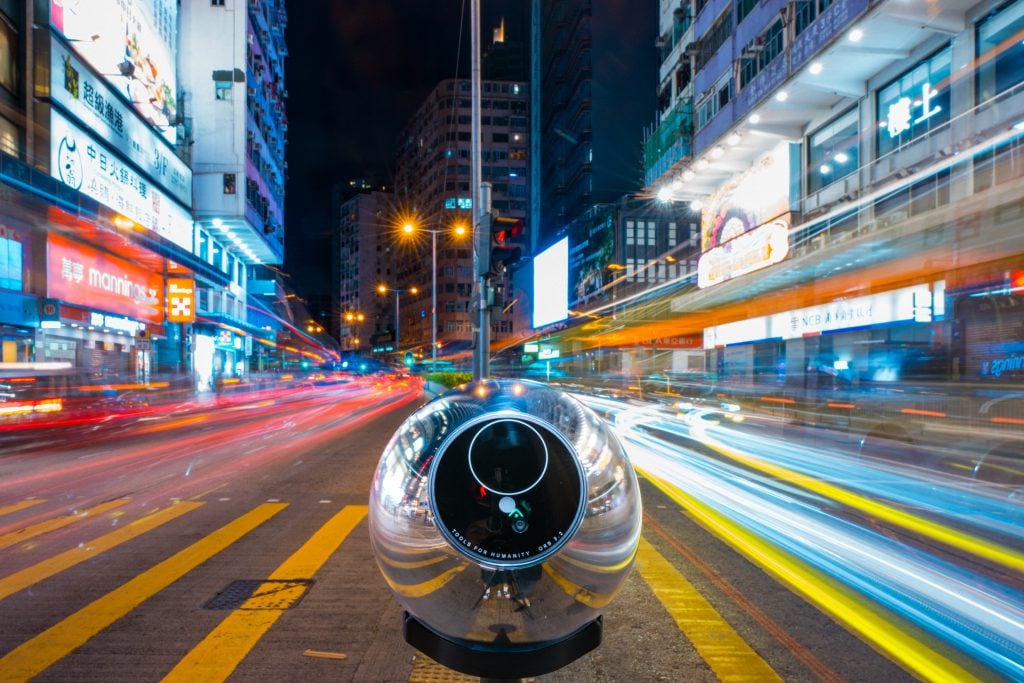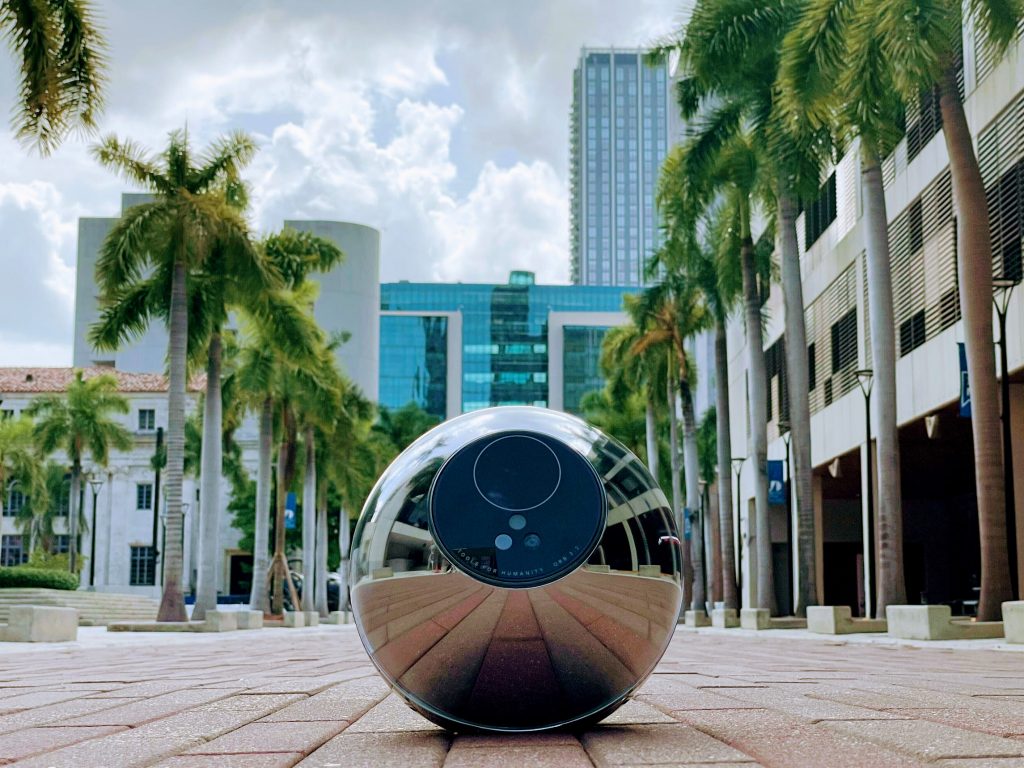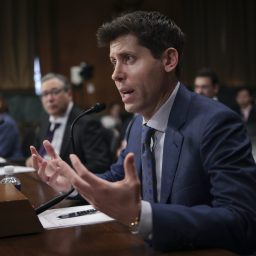Beginning early July, mirrored spheres have been popping up in cities across the world—from New York and São Paulo to Paris and Dubai. No, it’s not a global Jeff Koons takeover, nor is it a new interpretation of Cloud Gate. Actually, it is not public art at all but rather an effort by an A.I. company to establish digital identities for the world’s citizens by scanning their eyeballs.
The company behind the project is Worldcoin, founded some three years ago by Alex Blania and Sam Altman, CEO of OpenAI, with the intent to create “a new identity and financial network connecting billions of people in the age of A.I.”

A Worldcoin Orb in Hong Kong. Photo courtesy of Worldcoin.
The plan encompasses a privacy-ensuring digital identity it calls World ID and a digital currency, WLD—the former a global identity protocol enabling individuals to prove their personhood online in an era of rampant A.I. deepfakes, and the latter a tool to build toward an “A.I.-funded UBI [universal basic income].”
“Worldcoin is an attempt at global scale alignment,” the founders wrote in a statement. “The journey will be challenging and the outcome is uncertain. But finding new ways to broadly share the coming technological prosperity is a critical challenge of our time.”
According to Worldcoin, its beta phase has seen two million people, including more than 150,000 individuals in Spain, sign up for World ID by allowing the company to collect their biometric data.
To “5x” those numbers, Worldcoin has rolled out about 1,500 of its reflective spheres, dubbed Orbs, to pop-ups in more than 35 cities in 20 countries.
Developed by Tools for Humanity, the Orb is a 6.2 pound biometric imaging device custom-built to verify humanness in a secure way. Passersby need only gaze into its mirrored surface, whereupon the device will scan their irises and generate a unique hash or numeric code attached to their particular set of eyes. In exchange, each participant will receive a World ID and a WLD token.

A Worldcoin Orb in Miami. Photo courtesy of Worldcoin.
While Worldcoin has emphasized its privacy protocols throughout the process—biometrics data is deleted after the scan, leaving only the numeric code, which is securely encrypted—its iris-scanning project has raised concerns about how the company might be collecting and sharing its data. (Worldcoin’s early investors, which allegedly include Sam Bankman-Fried of FTX and Three Arrows Capital, have also raised eyebrows.)
Vitalik Buterin, founder of Ethereum, penned a lengthy blog post on July 24 that, while stressing the importance of proof of personhood and leaps in security, highlighted vulnerabilities in Worldcoin’s project, not limited to the risk of hacks, ID-selling, and the 3D-printing of fake people.
“As a community,” he wrote, “we can and should push all participants’ comfort zones on open-sourcing their tech, demand third-party audits, and even third-party-written software, and other checks and balances.”
Earlier still, whistleblower Edward Snowden, upon the project’s announcement in October 2021, decried the company’s use of biometrics and its privacy implications.
“This looks like it produces a global (hash) database of people’s iris scans (for “fairness”), and waves away the implications by saying ‘we deleted the scans!’ he tweeted. “Yeah, but you save the *hashes* produced by the scans. Hashes that match *future* scans.”
He added: “Don’t catalogue eyeballs.”
In emailed comments, Worldcoin told Artnet News: “Privacy is the bedrock on which Worldcoin is built and spans the protocol’s entire ecosystem including users, developer partners, and Worldcoin Operators. Each aspect of Worldcoin is designed with privacy as a focal point.”
More Trending Stories:
Looking for a Smart Beach Read? Here Are 15 of the Most Gripping New Art-World Books to Crack Open This Summer
Artists Have Come Forward Claiming Non-Payment From Simon Lee Gallery Following News of Its Financial Insolvency
Federal Funding Has Incentivized Institutions to Hold on to—and Even Destroy—Native Remains, a New Report Suggests
Who Was Edward Brezinski? Nobody Really Knows. But a New Documentary About the ’80s Artist’s Failure to Find Fame Could Change That
Scientists Have Developed the Whitest White Paint Ever Made—So Reflective It Can Cool Surfaces
Broadway Legend Stephen Sondheim’s Manhattan Townhouse—Where He Wrote Tony-Winning Musicals—Is Selling to the Tune of $7 Million
A Judge Green-lit a Virginia Museum’s Plans to Melt Down a Confederate Monument, Dismissing a Lawsuit Attempting to Save It
Artist Stuart Semple Is Releasing a ‘Barbie-Ish,’ Ultra-Fluorescent Pink Paint to Protest Mattel’s Trademark on the Color
An Australian Photographer Was Disqualified From a Photo Contest After Her Submission Was Mistakenly Deemed A.I.-Generated










